Bird flu: Six mile exclusion zone in East Yorkshire but ‘low risk’ to humans
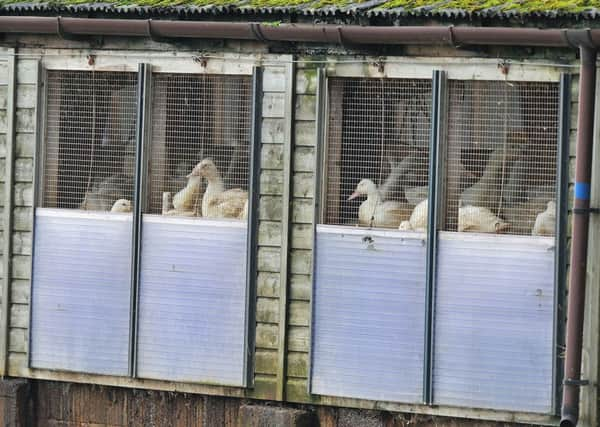

The case of the virus which has been confirmed at a duck breeding farm in Nafferton, near Driffield, is the H5 version of the virus, but is not the H5N1 strain which has caused deaths in humans.
A 10km (six mile) restriction zone has been put in place and all poultry on the farm is being culled in an attempt to prevent the spread of the disease, the Environment Department (Defra) said.
Advertisement
Hide AdAdvertisement
Hide AdIt is the first serious case of bird flu since 2008, when highly pathogenic H7N7 was found in free-range laying hens near Banbury, Oxfordshire.
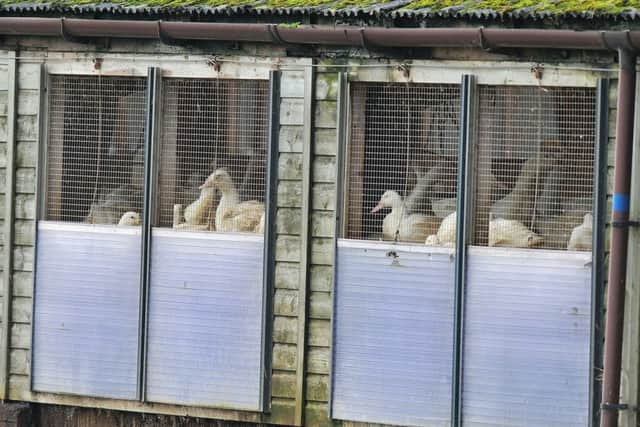

Officials believe the latest outbreak may be linked to Germany and the Netherlands. The transport of poultry and eggs throughout the Netherlands was banned yesterday after an outbreak of bird flu was confirmed at a chicken farm in Hekendorp.
Environment Secretary Liz Truss will make a statement to the Commons about the latest situation this afternoon, but Defra has insisted the risk to public health is “very low” and there is no risk to the food chain.
Chief veterinary officer Nigel Gibbens said the British farm at the centre of the alert, where farm workers dressed in blue protective overalls and face masks could be seen entering and leaving six low sheds containing ducks, had good bio-security in place.
Advertisement
Hide AdAdvertisement
Hide AdAs a result the risk of spread is “probably quite low”, he said, but warned more cases could follow and because of the “wild bird risk”, urged farmers and their vets all over the country to be alert to the possibility of disease.
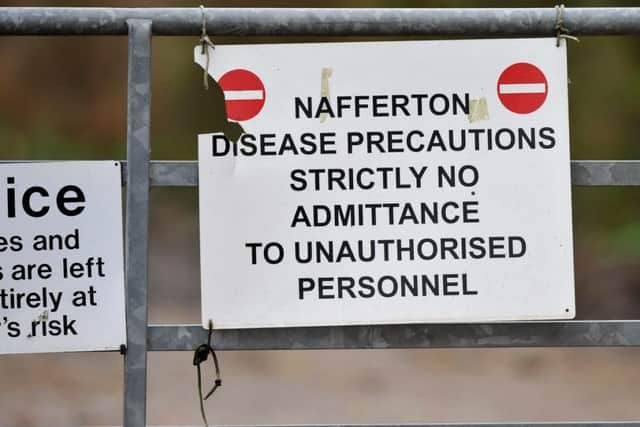

He said: “When we find this disease we take quick action to remove the birds as a possible source of further infection and we also restrict all the farms with birds in an area around it of 10km to look for possible further spread or possible other infected farms so we can get on top of those early as well.
“In parallel with that we’ll be looking for other possible sources of the disease, including any links to the disease that we’re seeing in the Netherlands and Germany, and that will include looking at the risk from wild bird spread to our national flock.”
Public Health England said that based on what was known about the specific strain of avian influenza, the risk to human health in this case “is considered extremely low”.
Advertisement
Hide AdAdvertisement
Hide AdMost types of bird flu are harmless to humans but two types - H5N1 and H7N9 - have caused concern. The World Health Organisation recorded 377 deaths from H5N1 in 15 countries by July last year.
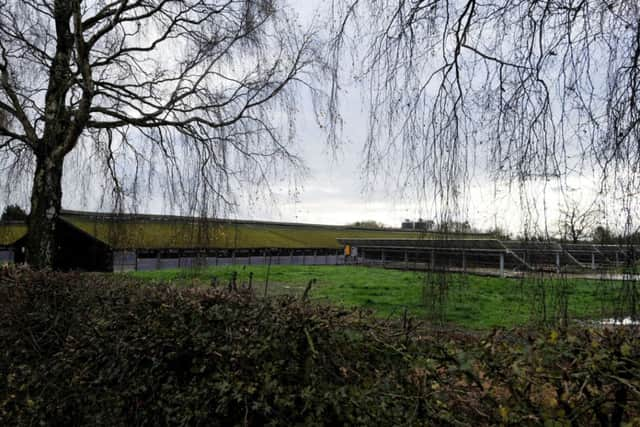

Dr Colin Butter, head of avian viral immunology at the Pirbright Institute, said: “It is of note that an outbreak of highly pathogenic (to birds) H5N8 was confirmed in the Netherlands at the weekend, having first been identified in Germany at the beginning of the month.
“Further investigations should confirm shortly if the Yorkshire virus is identical and is the result of transmission from wild birds or a common human factor.”
He added: “Whilst it may be possible that this strain of virus could infect people as the result of direct contact with infected birds, this is likely to be a rare event and there is no suggestion that the virus could transfer from person to person.
Advertisement
Hide AdAdvertisement
Hide Ad“The danger to public health is therefore very low and the public should not be concerned that this represents a significant threat.”
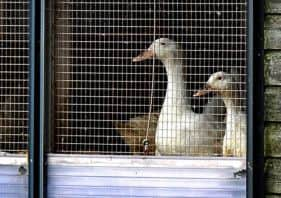

Prof Andrew Easton, professor of virology at the University of Warwick, said: “Human infections with flu strains that infect birds are not common and have been restricted to only a very small number, so the risk to humans from this incident is likely to be very small or non-existent.
“However, the risk to the poultry industry is high and the current measures require that infected birds are killed as quickly as possible to stop spread to other flocks.
“There is always concern that some strains of flu may be spread by wild birds and surveillance measures are also likely to be introduced in surrounding areas to check for the possibility of spread.”
Advertisement
Hide AdAdvertisement
Hide AdA notice attached to the gate of the farm in Lowthorpe Lane, in the village of Nafferton, read: “Nafferton disease precautions. Strictly no admittance to unauthorised personnel.”
Police Community Support Officers stood on guard and a Defra official hung a large yellow plastic bag from the gate before attaching a red and white striped cordon tape across the entrance to the farm.
Farm workers moved around inside the sheds, laying down straw and appearing to move dead birds.
Gary Lavis, chairman of the parish council, said a problem was first noticed around a week ago when egg production began dropping and the number of birds dying increased.
Advertisement
Hide AdAdvertisement
Hide Ad“They noticed symptoms themselves about one week ago: a drop-off in egg production and slightly higher mortality rates. That alerted them to do some testing,” he said.
Mr Lavis said he did not think the culling of the ducks would be carried out until tomorrow.
He said he was particularly concerned about the potential effect on the local wild bird population, and that there were also two battery farms in the area and a number of hobby farmers who keep chickens.
“I came up here to see if there’s anything as an organisation we can do and if anyone contacts me throughout the day I can reassure the public,” he said.
Advertisement
Hide AdAdvertisement
Hide Ad“We’re also concerned about the environmental impact. We have a large wildfowl population on the mere, which is a focal point of the village.”
Chris Dickinson, NFU county adviser for Yorkshire, said the farm in Nafferton was a breeding farm and the ducks were not intended to be consumed.
He said: “There’s been a bird flu outbreak here and I think the first thing to point out is it is a bird disease and there’s no immediate link to the food chain.”
He said Defra had full contingency plans for such situations and was investigating.
Advertisement
Hide AdAdvertisement
Hide Ad“Currently those findings are being looked at by Defra and in the next couple of days they will be able to tell us exactly what happened,” he said.
“The cull will be undertaken in due time by Defra and animal welfare.”
Mr Dickinson advised poultry farmers to contact Defra if they had any concerns.
He said farmers needed to maintain good hygiene measures and check their stock to help prevent the spread of this disease.
Advertisement
Hide AdAdvertisement
Hide AdHe said: “It is obviously a worry for poultry farmers but I just ask farmers to keep up high levels of biosecurity and Defra will inform us of their findings in the coming days.”
He added: “It is a busy time coming up for poultry farmers but poultry isn’t just for Christmas, it’s a big industry all the year round.”
Later, a large green metal container was delivered to the farm. It is believed to contain washing facilities for the workers.
A second lorry carrying dozens of gas bottles also arrived but later left the area. More notices were attached to the farm gate during the day, including an official health warning and a sign which read: “Avian influenza. Keep out.”
Advertisement
Hide AdAdvertisement
Hide AdA further “no entry” cordon had been taped across the entrance.
Prof Mark Fielder, professor of medical microbiology, Kingston University, said the fact that the virus in the duck farm was not H5N1 was “key”.
“This is bird flu, this is not human flu. It doesn’t mean you can’t catch it but the chances are very very low. The important thing is that we know it’s not H5N1,” he said.
If it is the H5N8 strain which has been found on the Continent, it would be hard for it to move from birds to humans.
Advertisement
Hide AdAdvertisement
Hide Ad“It’s a massive genetic change for it to be able to do that, and it’s not going to do that quickly,” he said.
Prof Fielder said it was not yet clear how the disease had been transmitted but could be the result of wild bird movements,which he thought was more likely than commercial transport of live birds.
“Where live birds are moved and have a disease, the possibility is they can transfer that disease, but when live animals of whatever type are moved there’s very heavy scrutiny, so that’s less likely, what is more likely in my personal opinion is wild bird spread.”
But RSPB spokesman Andre Farrar cautioned against jumping to conclusions about how the disease had emerged in Yorkshire, and urged a sensible, prudent approach to the situation.
Advertisement
Hide AdAdvertisement
Hide AdIf not, he warned: “You get people saying ‘something must be done’ and stupid, costly and unnecessary decisions can be made in the heat of speculation.”
Previous bird flu outbreaks reportedly led to people taking steps such as destroying stork nests in parts of Europe, he said, adding that even if the virus was being spread by wild birds, the solution for the poultry industry was “excellent biosecurity”.
Moving or disturbing wild birds would only add to the problem, he said.
British Poultry Council chief executive Andrew Large said: “Wide and ongoing surveillance of housed and wild birds in the UK, particularly susceptible waterfowl species, is key.
Advertisement
Hide AdAdvertisement
Hide Ad“We hope this outbreak has been quickly contained. Avian influenza is a disease of birds and the risk to the general public is judged by health experts to be negligible.
“Consumers should continue to support British poultry meat, assured that there is no risk in eating cooked poultry, and that is a message echoed by the Food Standards Agency and the World Health Organisation.”